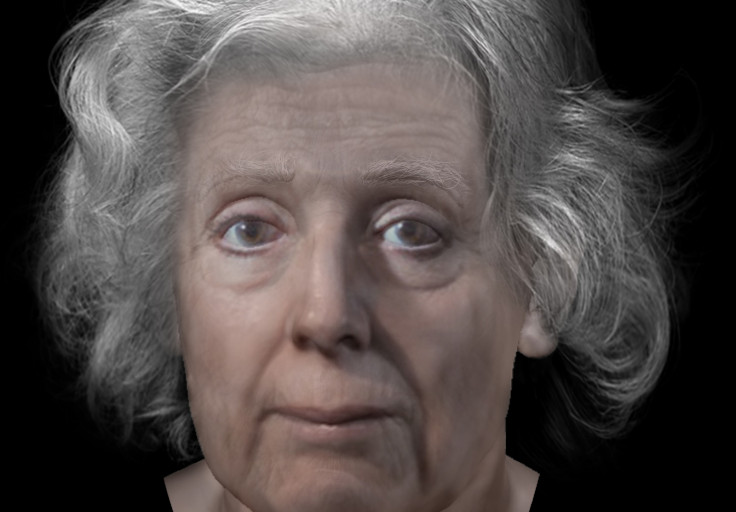Face of Scottish witch who died before she could be burned alive reconstructed by scientists
Lilias Adie may have killed herself rather than be burnt alive at the stake.

The face of an eighteenthcentury Scottish witch who died in jail before she could be burned at the stake has been reconstructed by forensic scientists.
Lilias Adie from Fife died in 1704 in prison after she "confessed" under interrogation to witchcraft and having sex with the Devil.
Forensic scientists at the University of Dundee think she may have killed herself rather than be burned alive at the stake.
They add this is likely to be the only accurate likeness of a Scottish witch in existence as most were burned, destroying any hope of reconstructing their faces from skulls.
Adie was buried under a large stone on the Fife coast more than 300 years ago, with locals perhaps believing the stone would stop her rising from the dead.
Her remains were exhumed in the nineteenth century by antiquarians, and her skull eventually ended up in the St Andrews University Museum. It was photographed before it went missing during the twentieth century.
Dr Christopher Rynn, who carried out the work using state-of-the-art 3D virtual sculpture, said: "When the reconstruction is up to the skin layer, it's a bit like meeting somebody and they begin to remind you of people you know, as you're tweaking the facial expression and adding photographic textures.
"There was nothing in Lilias' story that suggested to me that nowadays she would be considered as anything other than a victim of horrible circumstances, so I saw no reason to pull the face into an unpleasant or mean expression and she ended up having quite a kind face, quite naturally."
Researchers estimate Adie was a frail woman in her 60s, with failing eyesight.
Across Europe for over 200 years as many as 60,000 people were hanged or burned as witches, experts estimate.
Looking for scapegoats
Witches were blamed as scapegoats for catastrophes ranging from an outbreak of illness to crop failure.
They was usually old and poor, and three quarters of those killed were women. A long-running feud with a neighbour would be enough to call somebody out as a witch when the opportunity presented itself.
The most most famous case in England was of the Pendle Witches from Lancashire, who were convicted of murdering 17 people in 1612. Their prosecutors argued they had sold their souls to the devil in return for being able to disable or kill anyone they pleased.
During this period across Europe communities struggled to cope with the Black Death, the English Civil War, the Thirty Years War in Germany and the Reformation, which split the church. These profound upheavals led to people search for scapegoats for their misfortunes.
However, the 1735 Witchcraft Act saw punishments for practising "witchcraft" greatly changed, as Enlightenment swept across the newly formed UK.
It is unfortunate that Lilias Adie met her end some three decades before the act was repealed in Scotland.
Adie's story will be explored in a BBC Scotland radio programme, The Halloween Time Travels, airing on Tuesday (31 October) at 1.30pm.
Programme historian Louise Yeoman added: "I think she was a very clever and inventive person. The point of the interrogation and its cruelties was to get names. Lilias said that she couldn't give the names of other women at the witches' gatherings as they were masked like gentlewomen.
"She only gave names which were already known and kept up coming up with good reasons for not identifying other women for this horrendous treatment – despite the fact it would probably mean there was no let-up for her.
"It's sad to think her neighbours expected some terrifying monster when she was actually an innocent person who'd suffered terribly. The only thing that's monstrous here is the miscarriage of justice."




















